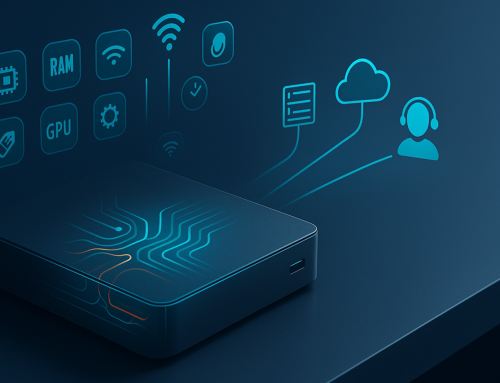This past Friday, I did some spring cleaning… You know, that once-yearly exercise of reformatting your PCs hard drive and reinstalling Windows, applications, settings, etc. My user experience had reached the breaking point. Performance wasn’t as it should be and I could no longer hobble my way along. This exercise is not a difficult one, and I find the prospect of it refreshing as my career path has taken me away from the more hands-on aspects of computing and IT.
 That excitement, however, soon faded. And this year’s Windows-install was one for the ages… I won’t get in the weeds, but the combination of my Ultrabook (super thin, sexy laptop with no optical media and limited USB ports), the need to remain net-attached and banging my knuckles trying to figure out how to boot a USB memory stick made this year’s effort a bit of rocket-surgery. Selective amnesia can’t kick in soon enough; so I can look forward to this same drudgery next spring.
That excitement, however, soon faded. And this year’s Windows-install was one for the ages… I won’t get in the weeds, but the combination of my Ultrabook (super thin, sexy laptop with no optical media and limited USB ports), the need to remain net-attached and banging my knuckles trying to figure out how to boot a USB memory stick made this year’s effort a bit of rocket-surgery. Selective amnesia can’t kick in soon enough; so I can look forward to this same drudgery next spring.
An Unnecessary Pilgrimage
While returning from BestBuy (to purchase a large enough memory stick that could house the full Windows image) and in a moment of clarity, it dawned on me that I’ve been making this same install pilgrimage for the last two decades. And while the exercise of installing a fresh copy of Windows, applications and preserving my personalization settings does not take all that long to complete, it seemed odd to me that this is still an acceptable practice.
I mean, I would never do this for a server-class operating system install. By a show of hands, who among you still install server-class OSes one at a time? Today most IT pros simply clone a pre-set image and have a very tailored and specific OS provisioned in mere seconds. Yet I spent most of a day doing this for one PC. Worse still, there are many organizations—both small and global—that still consider a variation on this theme to be normal. How many of you are using tools like SCOM, or Ghost to manage PCs in your organization?
Before you all jump on me; I understand there are far better ways to manage PCs, images and the operations around PC lifecycle management. I get it. Really. My point is this. Why is it still acceptable to have PC lifecycle management at all? The PC is not what’s important here. It’s the applications and ensuring that all users are benefiting form a consistent user experience. That is a well understood and accepted goal by most. The PC, and the operating system are a means to an end. And we seem to have lost sight of the ultimate goal.
Next Generation Workspaces
I won’t get into an architectural or platform discussion, as these too are just a means to an end. VDI, RDSH, published applications, host-based computing… These are all today’s version of minimizing the pilgrimage while we look to deliver a more agile and flexible end user workspace. I like to call this destination the “next-generation workspace.” But ultimately, it’s about the attributes. It is NOT about any specific platform. Simply, it’s about commoditizing the PC (both the hardware and the operating system) and making sure you deliver the applications with all the customization, personalization and flexibility required to meet both user and organizational needs.
Yet we continue to focus on the pilgrimage. The task of PC lifecycle management is outdated. It’s a journey that focus on incremental gains, but loses sight of the evolving needs of the users. Yes, many organizations are not in dire need of this level of change. That said, the operational benefit and flexibility gained are still worth the transformation and the end of ritualistic approaches to managing an intermediate step.
At Liquidware Labs, we are about empowering you to change. Our Essentials bundle provides the means to remove the user persona, policies and applications as a means to deliver the next-generation workspace; including a user-centric visibility approach to monitor and diagnose user experience throughout the lifecycle. Profile Unity with FlexApp, Stratusphere FIT and Stratusphere UX provide a complete end-to-end feature set with everything you need to get on the right path to desktop transformational success.
Take a hard look at your lifecycle approach. Are you spending time on an outdated and unnecessary pilgrimage?








Leave A Comment
You must be logged in to post a comment.